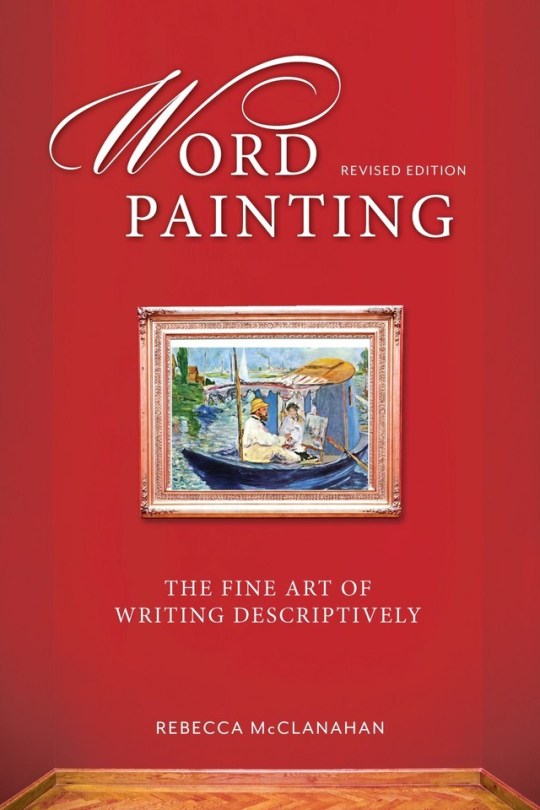#girl its an adjective. a mere descriptor
Text
there are so many fucking idiots going after some random person on tiktok for saying cis isnt a slur☠️
#holy shit people are dumb as shit#it's like being like 'dont call my hair brown!! its a slur! its a label my hair doesnt claim!!' are you...fucking dense???#girl its an adjective. a mere descriptor#they just dont like being called cis because to them trans is a dirty word so that must mean cis is too#its the same as saying the Ball Is Red or the Sky Is Blue#like ...did yall not learn what adjectives and descriptors were in school??
4 notes
·
View notes
Text
The Anatomy of an American Beauty
By Kitty Quinn, Photographed by Milan Lazovski, Makeup by Kitty Quinn, Styled by Kitty Quinn & Milan Lazovski, Model: Ashtyn Vanlerberghe

Lovely, luscious and exotic are just a few of the adjectives that could be used to describe the illustrious blonde bombshell. She’s the golden girl of Hollywood, a quintessential aspect of the American dream and serves as the embodiment of femininity according to societal standards. The blonde bombshell is a vessel for love and sex but is disregarded in all other respects. Though presented in a more sensationalized fashion, she is not treated much differently than the average woman and can represent a reflection of the collective view on femininity and womanhood.


The term “bombshell” being used to describe an attractive woman can be traced back to a popular sex symbol of the 1930s, Jean Harlow. Known for her striking platinum blonde hair, Harlow was appropriately casted in the 1931 film, Platinum Blonde, which garnered her the title of the original blonde bombshell. By 1933, Harlow was casted to play in the film Bombshell, where the posters outlined her as the “Blonde Bombshell of filmdom”. Following this, the term “blonde bombshell” became a common descriptor for blondes within Hollywood. However, according to the Online Etymology Dictionary by Douglas Harper, the term “bombshell” cannot be fully traced within widespread vernacular until 1942. Following the establishment of the term, during the 1940s to the 1960s, it became widely popular due to icons such as Marilyn Monroe, Mae West, Brigitte Bardot, and more. Moreover, during these times counterparts to the blonde bombshell began to appear in the form of brunette and ethnic resembling women as well. In order to easily identify a bombshell, there are a few factors such as hypersexual behavior, a curvaceous figure, a tantalizing personality and a beauty sought after by women and lusted for by men.

Even in times where sexuality is frowned upon, she appears like a shining star of sensuality in the darkness; perhaps that’s what makes her alluring, or maybe its the fact that she owns her power and uses it accordingly. In that way, the bombshell can be viewed as empowering to a certain degree. Despite this however, she is merely a pawn to the American dream. She isn’t her brains or ambitions, she is to be sought after above all. During the golden age of Hollywood, it seemed to many that the American dream was alive and breathing within the heart of Los Angeles. Thousands traveled in hopes to make it big after seeing the success of the stars that spangled the silver screen. What made the American dream so appealing to men especially was the possibility of possessing things like fame, fortune and even the woman of their dreams. The concept of blonde bombshell within itself represents this “all American” image that is in such high demand; however, it also represents the darker side of it as well.


For the most part, the blonde bombshell has typically caucasian features such as the obvious blonde hair, blue eyes and fair skin. While bombshells of all races and hair colors were seeing a rise, especially in the latter half of the 1950’s and 1960’s, the blonde bombshell always seemed to be able to reach prolific heights of stardom while other bombshells and women of color were pushed aside. Women of color were rarely given the bombshell title despite being highly sexualized. Rather than being idolized and rewarded, these women were vilified for their sexuality instead.

That’s not to say women like Eartha Kitt, Lena Horne, Dorothy Danridge, Diahann Carroll, and many more weren’t admired— in fact, they were. However, due to racist ideologies and large focus on the “American ideal”, they could never be mythologized like Marilyn Monroe and her other white bombshell counterparts.

The bombshell archetype is harmful to all women, just in different ways. While women like Marilyn Monroe would never be racially discriminated against, a nearly universal experience for all bombshells is the mistreatment that they face. Far too often people see a sexually liberated woman and feel entitled to sexual favors because they are seen behaving a certain way. This isn't just an issue of the past, but something that continues on even in present times. For example, when Pamela Anderson’s sex tape with Tommy Lee leaked in 1995, Lee was admired while Anderson faced more sexual harassment than ever before. Lee was able to move on with his life, but Anderson continues to experience the negative effects 27 years later. With the release of the Disney+ series Pam & Tommy this year, Anderson’s power was taken away once more and her story was told without her consent. Countless other bombshells like Anna Nicole Smith, Jayne Mansfield, and nearly all of the aforementioned women also have tragic experiences that endlessly haunted them throughout their lives.

There is a common misconception that because our society values beauty and because these women are beautiful, that they would lead relatively unproblematic and happy lives. Past surface level, it is easy to see that this is quite the contrary. Although deified and highly valued, the bombshell is hated for the same reasons that she is so loved. In film, bombshells were either killed or tamed with marriage as punishment for provocatively due to the shame that sexual desires provoke within our society’s puritanical ideals about sex. The bombshell archetype is just another case of women being condemned for the carnal desires that they bring out in men.

#blondebombshell#americandream#hollywood#marilynmonroe#goldenera#moviestar#actress#pamelaanderson#brigittebardot#commentary#photography#detroit#feminism#beauty#bombshell#annanicolesmith#50s#90s#jeanharlow#america#art#vintage#fashion#makeup#editorial#film
11 notes
·
View notes
Photo

(via 11 Secrets to Writing Effective Character Description)
The characters in our stories, songs, poems, and essays embody our writing. They are our words made flesh. Sometimes they even speak for us, carrying much of the burden of plot, theme, mood, idea, and emotion. But they do not exist until we describe them on the page. Until we anchor them with words, they drift, bodiless and ethereal. They weigh nothing; they have no voice. Once we’ve written the first words—“Belinda Beatrice,” perhaps, or “the dark-eyed salesman in the back of the room,” or simply “the girl”—our characters begin to take form. Soon they’ll be more than mere names. They’ll put on jeans or rubber hip boots, light thin cigarettes or thick cigars; they’ll stutter or shout, buy a townhouse on the Upper East Side or a studio in the Village; they’ll marry for life or survive a series of happy affairs; they’ll beat their children or embrace them. What they become, on the page, is up to us.
Here are 11 secrets to keep in mind as you breathe life into your characters through description.
1. Description that relies solely on physical attributes too often turns into what Janet Burroway calls the “all-points bulletin.”
It reads something like this: “My father is a tall, middle-aged man of average build. He has green eyes and brown hair and usually wears khakis and oxford shirts.”
This description is so mundane, it barely qualifies as an “all-points bulletin.” Can you imagine the police searching for this suspect? No identifying marks, no scars or tattoos, nothing to distinguish him. He appears as a cardboard cutout rather than as a living, breathing character. Yes, the details are accurate, but they don’t call forth vivid images. We can barely make out this character’s form; how can we be expected to remember him?
When we describe a character, factual information alone is not sufficient, no matter how accurate it might be. The details must appeal to our senses. Phrases that merely label (like tall, middle-aged, and average) bring no clear image to our minds. Since most people form their first impression of someone through visual clues, it makes sense to describe our characters using visual images. Green eyes is a beginning, but it doesn’t go far enough. Are they pale green or dark green? Even a simple adjective can strengthen a detail. If the adjective also suggests a metaphor—forest green, pea green, or emerald green—the reader not only begins to make associations (positive or negative) but also visualizes in her mind’s eye the vehicle of the metaphor—forest trees, peas, or glittering gems.
2. The problem with intensifying an image only by adjectives is that adjectives encourage cliché.
It’s hard to think of adjective descriptors that haven’t been overused: bulging or ropy muscles, clean-cut good looks, frizzy hair. If you use an adjective to describe a physical attribute, make sure that the phrase is not only accurate and sensory but also fresh. In her short story “Flowering Judas,” Katherine Anne Porter describes Braggioni’s singing voice as a “furry, mournful voice” that takes the high notes “in a prolonged painful squeal.” Often the easiest way to avoid an adjective-based cliché is to free the phrase entirely from its adjective modifier. For example, rather than describing her eyes merely as “hazel,” Emily Dickinson remarked that they were “the color of the sherry the guests leave in the glasses.”
3. Strengthen physical descriptions by making details more specific.
In my earlier “all-points bulletin” example, the description of the father’s hair might be improved with a detail such as “a military buzz-cut, prickly to the touch” or “the aging hippie’s last chance—a long ponytail striated with gray.” Either of these descriptions would paint a stronger picture than the bland phrase brown hair. In the same way, his oxford shirt could become “a white oxford button-down that he’d steam-pleated just minutes before” or “the same style of baby blue oxford he’d worn since prep school, rolled carelessly at the elbows.” These descriptions not only bring forth images, they also suggest the background and the personality of the father.
4. Select physical details carefully, choosing only those that create the strongest, most revealing impression.
One well-chosen physical trait, item of clothing, or idiosyncratic mannerism can reveal character more effectively than a dozen random images. This applies to characters in nonfiction as well as fiction. When I write about my grandmother, I usually focus on her strong, jutting chin—not only because it was her most dominant feature but also because it suggests her stubbornness and determination. When I write about Uncle Leland, I describe the wandering eye that gave him a perpetually distracted look, as if only his body was present. His spirit, it seemed, had already left on some journey he’d glimpsed peripherally, a place the rest of us were unable to see. As you describe real-life characters, zero in on distinguishing characteristics that reveal personality: gnarled, arthritic hands always busy at some task; a habit of covering her mouth each time a giggle rises up; a lopsided swagger as he makes his way to the horse barn; the scent of coconut suntan oil, cigarettes, and leather each time she sashays past your chair.
5. A character’s immediate surroundings can provide the backdrop for the sensory and significant details that shape the description of the character himself.
If your character doesn’t yet have a job, a hobby, a place to live, or a place to wander, you might need to supply these things. Once your character is situated comfortably, he may relax enough to reveal his secrets. On the other hand, you might purposely make your character uncomfortable—that is, put him in an environment where he definitely doesn’t fit, just to see how he’ll respond. Let’s say you’ve written several descriptions of an elderly woman working in the kitchen, yet she hasn’t begun to ripen into the three-dimensional character you know she could become. Try putting her at a gay bar on a Saturday night, or in a tattoo parlor, or (if you’re up for a little time travel) at Appomattox, serving her famous buttermilk biscuits to Grant and Lee.
6. In describing a character’s surroundings, you don’t have to limit yourself to a character’s present life.
Early environments shape fictional characters as well as flesh-and-blood people. In Flaubert’s description of Emma Bovary’s adolescent years in the convent, he foreshadows the woman she will become, a woman who moves through life in a romantic malaise, dreaming of faraway lands and loves. We learn about Madame Bovary through concrete, sensory descriptions of the place that formed her. In addition, Flaubert describes the book that held her attention during mass and the images that she particularly loved—a sick lamb, a pierced heart.
Living among those white-faced women with their rosaries and copper crosses, never getting away from the stuffy schoolroom atmosphere, she gradually succumbed to the mystic languor exhaled by the perfumes of the altar, the coolness of the holy-water fonts and the radiance of the tapers. Instead of following the Mass, she used to gaze at the azure-bordered religious drawings in her book. She loved the sick lamb, the Sacred Heart pierced with sharp arrows, and poor Jesus falling beneath His cross.
7. Characters reveal their inner lives—their preoccupations, values, lifestyles, likes and dislikes, fears and aspirations—by the objects that fill their hands, houses, offices, cars, suitcases, grocery carts, and dreams.
In the opening scenes of the film The Big Chill, we’re introduced to the main characters by watching them unpack the bags they’ve brought for a weekend trip to a mutual friend’s funeral. One character has packed enough pills to stock a drugstore; another has packed a calculator; still another, several packages of condoms. Before a word is spoken—even before we know anyone’s name—we catch glimpses of the characters’ lives through the objects that define them.
What items would your character pack for a weekend away? What would she use for luggage? A leather valise with a gold monogram on the handle? An old accordion case with decals from every theme park she’s visited? A duffel bag? Make a list of everything your character would pack: a “Save the Whales” T-shirt; a white cotton nursing bra, size 36D; a breast pump; a Mickey Mouse alarm clock; a photograph of her husband rocking a child to sleep; a can of Mace; three Hershey bars.
8. Description doesn’t have to be direct to be effective.
Techniques abound for describing a character indirectly, for instance, through the objects that fill her world. Create a grocery list for your character—or two or three, depending on who’s coming for dinner. Show us the character’s credit card bill or the itemized deductions on her income tax forms. Let your character host a garage sale and watch her squirm while neighbors and strangers rifle through her stuff. Which items is she practically giving away? What has she overpriced, secretly hoping no one will buy it? Write your character’s Last Will and Testament. Which niece gets the Steinway? Who gets the lake cottage—the stepson or the daughter? If your main characters are divorcing, how will they divide their assets? Which one will fight hardest to keep the dog?
9. To make characters believable to readers, set them in motion.
The earlier “all-points bulletin” description of the father failed not only because the details were mundane and the prose stilted; it also suffered from lack of movement. To enlarge the description, imagine that same father in a particular setting—not just in the house but also sitting in the brown recliner. Then, because setting implies time as well as place, choose a particular time in which to place him. The time may be bound by the clock (six o’clock, sunrise, early afternoon) or bound only by the father’s personal history (after the divorce, the day he lost his job, two weeks before his sixtieth birthday).
Then set the father in motion. Again, be as specific as possible. “Reading the newspaper” is a start, but it does little more than label a generic activity. In order for readers to enter the fictional dream, the activity must be shown. Often this means breaking a large, generic activity into smaller, more particular parts: “scowling at the Dow Jones averages,” perhaps, or “skimming the used-car ads” or “wiping his ink-stained fingers on the monogrammed handkerchief.” Besides providing visual images for the reader, specific and representative actions also suggest the personality of the character, his habits and desires, and even the emotional life hidden beneath the physical details.
10. Verbs are the foot soldiers of action-based description.
However, we don’t need to confine our use of verbs to the actions a character performs. Well-placed verbs can sharpen almost any physical description of a character. In the following passage from Marilynne Robinson’s novel Housekeeping, verbs enliven the description even when the grandmother isn’t in motion.
… in the last years she continued to settle and began to shrink. Her mouth bowed forward and her brow sloped back, and her skull shone pink and speckled within a mere haze of hair, which hovered about her head like the remembered shape of an altered thing. She looked as if the nimbus of humanity were fading away and she were turning monkey. Tendrils grew from her eyebrows and coarse white hairs sprouted on her lip and chin. When she put on an old dress the bosom hung empty and the hem swept the floor. Old hats fell down over her eyes. Sometimes she put her hand over her mouth and laughed, her eyes closed and her shoulder shaking.
Notice the strong verbs Robinson uses throughout the description. The mouth “bowed” forward; the brow “sloped” back; the hair “hovered,” then “sprouted”; the hem “swept” the floor; hats “fell” down over her eyes. Even when the grandmother’s body is at rest, the description pulses with activity. And when the grandmother finally does move—putting a hand over her mouth, closing her eyes, laughing until her shoulders shake—we visualize her in our mind’s eye because the actions are concrete and specific. They are what the playwright David Mamet calls “actable actions.” Opening a window is an actable action, as is slamming a door. “Coming to terms with himself” or “understanding that he’s been wrong all along” are not actable actions. This distinction between nonactable and actable actions echoes our earlier distinction between showing and telling. For the most part, a character’s movements must be rendered concretely—that is, shown—before the reader can participate in the fictional dream.
Actable actions are important elements in many fiction and nonfiction scenes that include dialogue. In some cases, actions, along with environmental clues, are even more important to character development than the words the characters speak. Writers of effective dialogue include pauses, voice inflections, repetitions, gestures, and other details to suggest the psychological and emotional subtext of a scene. Journalists and other nonfiction writers do the same. Let’s say you’ve just interviewed your cousin about his military service during the Vietnam War. You have a transcript of the interview, based on audio or video recordings, but you also took notes about what else was going on in that room. As you write, include nonverbal clues as well as your cousin’s actual words. When you asked him about his tour of duty, did he look out the window, light another cigarette, and change the subject? Was it a stormy afternoon? What song was playing on the radio? If his ancient dog was asleep on your cousin’s lap, did he stroke the dog as he spoke? When the phone rang, did your cousin ignore it or jump up to answer it, looking relieved for the interruption? Including details such as these will deepen your character description.
11. We don’t always have to use concrete, sensory details to describe our characters, and we aren’t limited to describing actable actions.
The novels of Milan Kundera use little outward description of characters or their actions. Kundera is more concerned with a character’s interior landscape, with what he calls a character’s “existential problem,” than with sensory description of person or action. In The Unbearable Lightness of Being, Tomas’s body is not described at all, since the idea of body does not constitute Tomas’s internal dilemma. Teresa’s body is described in physical, concrete terms (though not with the degree of detail most novelists would employ) only because her body represents one of her existential preoccupations. For Kundera, a novel is more a meditation on ideas and the private world of the mind than a realistic depiction of characters. Reading Kundera, I always feel that I’m living inside the characters rather than watching them move, bodily, through the world.
With writers like Kundera, we learn about characters through the themes and obsessions of their inner lives, their “existential problems” as depicted primarily through dreams, visions, memories, and thoughts. Other writers probe characters’ inner lives through what characters see through their eyes. A writer who describes what a character sees also reveals, in part, a character’s inner drama. In The Madness of a Seduced Woman, Susan Fromberg Schaeffer describes a farm through the eyes of the novel’s main character, Agnes, who has just fallen in love and is anticipating her first sexual encounter, which she simultaneously longs for and fears.
… and I saw how the smooth, white curve of the snow as it lay on the ground was like the curve of a woman’s body, and I saw how the farm was like the body of a woman which lay down under the sun and under the freezing snow and perpetually and relentlessly produced uncountable swarms of living things, all born with mouths open and cries rising from them into the air, long-boned muzzles opening … as if they would swallow the world whole …
Later in the book, when Agnes’s sexual relationship has led to pregnancy, then to a life-threatening abortion, she describes the farm in quite different terms.
It was August, high summer, but there was something definite and curiously insubstantial in the air. … In the fields near me, the cattle were untroubled, their jaws grinding the last of the grass, their large, fat tongues drinking the clear brook water. But there was something in the air, a sad note the weather played upon the instrument of the bone-stretched skin. … In October, the leaves would be off the trees; the fallen leaves would be beaten flat by heavy rains and the first fall of snow. The bony ledges of the earth would begin to show, the earth’s skeleton shedding its unnecessary flesh.
By describing the farm through Agnes’s eyes, Schaeffer not only shows us Agnes’s inner landscape—her ongoing obsession with sex and pregnancy—but also demonstrates a turning point in Agnes’s view of sexuality. In the first passage, which depicts a farm in winter, Agnes sees images of beginnings and births. The earth is curved and full like a woman’s fleshy body. In the second scene, described as occurring in “high summer,” images of death prevail. Agnes’s mind jumps ahead to autumn, to dying leaves and heavy rains, a time when the earth, no longer curved in a womanly shape, is little more than a skeleton, having shed the flesh it no longer needs.
3 notes
·
View notes